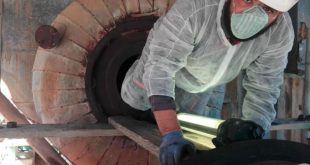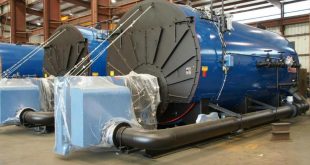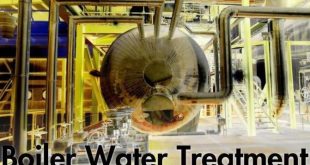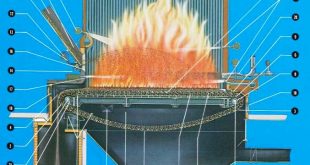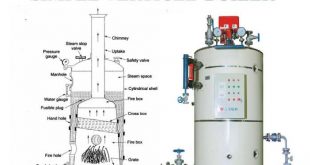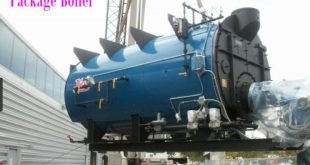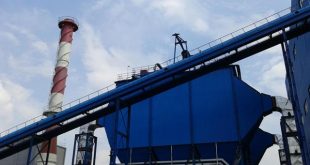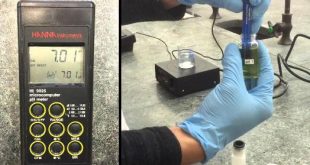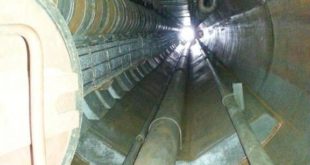In the water tube boiler the upper drum (Boiler steam drum) provides for separation of steam from water. It also provides liquid holdup capacity (typically 10 to 60 seconds) to allow for a dynamic response to load changes without losing liquid in the downcomer and riser tubes. The size of the steam drum is determined by the volume required for a …
Read More »Boiler inspection Procedure requirement and Recommendations
Pressure vessels and Boiler Inspection are done to determine the amount of maintenance required to have equipment operate properly until the next turnaround. A comprehensive equipment history must be maintained that includes conditions found during inspection and testing, maintenance work done, changes made, and date of each. ASME Code Standards require boiler inspection to be done at least every year. …
Read More »Boiler Design Basic Steps
Boiler design is the process of designing boilers used for various purposes. The main function of a boiler is to heat water for steam generation. Steam produced can be used for a variety of purposes including space heating, sterilization, drying, humidification, and power generation. The temperature or condition of steam required for these applications is different, so how to design a boiler …
Read More »Welding and cutting safety
Many hazards are associated with welding and cutting safety, but as in any other operations they can be controlled by appropriate preventive measures. Unless these measures are taken, the hazardous situations can easily give rise to personnel injury and/or material damage. Welding and cutting hazard examples are:- Electric shock Fumes and gases Welding sparks Arc rays Confined space General work …
Read More »Boiler Water Treatment Basic
Boiler Water Treatment is necessary to Produce quality steam on demand and depends on properly managed water treatment to control steam purity, deposits, and corrosion. There are two main types of boiler feed water treatment Internal boiler Water Treatment method and external boiler water treatment. A boiler is the sump of the boiler system. It ultimately receives all of the …
Read More »Stoker Fired Boiler types of stokers
Stoker Fired Boiler are classified according to the method of feeding fuel to the furnace and by the type of grate. The main types of stokers are: Chain-grate or travelling-grate stoker Spreader stoker boiler Travelling Grate or chain grate Stoker Boiler In Travelling Grate boiler coal is fed at one end of a moving steel chain grate. As grate moves …
Read More »Simple Vertical Boiler Working
A vertical boiler is a type of steam boiler that is designed with a vertical cylinder shape. Vertical boilers are often used in small- to medium-sized facilities, such as schools, hospitals, and small industrial plants, where space is at a premium. This is the simplest type of fire tube boiler. A simple vertical boiler produces low Pressure and a small …
Read More »Package Boiler
The packaged boiler is so called because it comes as a complete factory-assembled Package with all mountings, accessories and control instrumentation are installed on it. Once it delivered to site, boiler requires only the steam, feed water pipe line. fuel supply connections and electrical connections to be made for package boiler to become operational and produce steam. Package boilers are …
Read More »Electrostatic precipitator meaning
Electrostatic precipitator meaning an efficient flue gas cleaning device ESP means Electrostatic precipitator is a device have been used for over half a century to control particulate emissions or dust cleaning device in many industries like power plants boiler ,cement and steel mills. Electrostatic precipitators have a very high collection efficiency upto 99%. ESP can handle large exhaust gas volumes …
Read More »PH determination methods By pH meter
Theory of PH The quantitative measurement of the acidity or basicity of a solution is called pH of the solution. It is defined as the negative logarithm of hydrogen ion concentration of a solution. pH = -log [ H+ ] If the pH of a solution is 7, the solution is called neutral. The …
Read More »Steam Blowing Procedure
This Steam Blowing procedure is intended to provide general application guidance and establish controls during Steam Blowing of piping and equipment. The purpose of steam blowing, prior to start-up of a new unit, is to remove any foreign material in the superheater and steam piping after the erection completion. Considerable damage could result, if such foreign material is allowed to …
Read More »Steam Boiler Alkali Boil out Procedure
Boiler Alkali boil out is carried out to remove material such as lubricants, oil, and rust. During the manufacturing of seamless steel tubes, mill scales are bound to be formed, and some of these can remain inside. During fabrication and erection of the pressure parts, some amount of oil and lubricants can also. get into the tube surface apart from …
Read More » Boilersinfo Boiler and Mechanical Power Digital Library
Boilersinfo Boiler and Mechanical Power Digital Library

